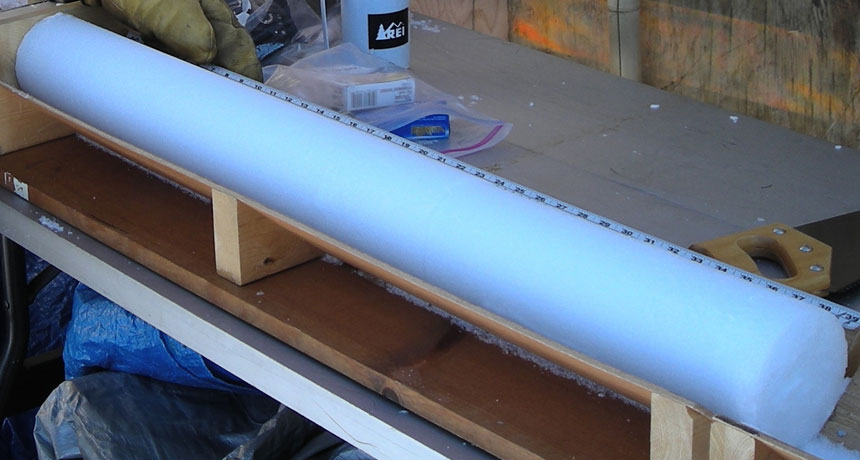Explainer: How scientists know Earth is warming
With satellites and ice cores, scientists can calculate the planet’s temperature

Scientists can use ice cores, such as this one from Greenland, to “see” past temperatures on Earth.
Jihong Cole-Dai
Temperatures on Earth can soar above 40° Celsius (104° Fahrenheit) and drop well below 0 °C (32 °F). Despite that variability, scientists can calculate a global average. Countries around the world have had reliable weather monitoring stations on land and sea since about 1880. In the 1960s, researchers also began taking the Earth’s temperature with the help of satellites. Satellites don’t measure temperature directly. Instead they measure radiation given off by oxygen that’s in Earth’s atmosphere. The intensity of this radiation is linked to air temperatures. Computer programs take all of these data and turn them into a global average.
Scientists use temperature readings from both satellites and climate monitoring stations to show that 2014 was officially the warmest year on record — at least through 2014.
The temperatures have not stopped rising, however. By the close of 2015, temperatures were yet again about to hit a new record high.
People have been keeping detailed temperature readings only as far back as 1880. So scientists have to use other methods to calculate what earlier temperatures would have been. With these methods, they now can see that global temperatures have at times in the distant past been even higher than they are today.
But the historical record also shows that over the past 100 years or so, temperatures have been rising exceptionally fast, notes Allegra LeGrande. She is a climate scientist at the NASA Goddard Institute for Space Studies and the Center for Climate Systems Research, in New York City.

Glaciers and ice sheets trap samples of oxygen and hydrogen isotopes from Earth’s atmosphere going back about one million years. As more snow piles up, the snow on the bottom gets compacted into ice. A new layer accumulates each year.
Scientists drill and remove ice cores — long tubes of ice — from glaciers. Each layer of the ice core contains hydrogen and oxygen going back further in Earth’s history. The amount of oxygen and hydrogen isotopes in each layer can tell us how warm or cold the climate was back then.
Those ice cores show current warming is happening faster now than in the past. In the last million years or so, the planet has gone through a series of ice ages. The Earth got cooler, then warmed up. Research by the National Aeronautics and Space Administration shows that during the periods of warming, global temperatures rose 4 °C to 7 °C (7.2 °F to 12.6 °F) over about 5,000 years. But in the past century, the temperature has climbed roughly 10 times faster!
Temperatures are rising quickly now because of greenhouse gases, such as carbon dioxide and methane. When the planet’s ground and water are warmed by the sun, they radiate heat back out into the atmosphere. Greenhouse gases trap that heat close to the planet’s surface. That’s good, up to a point. Life on Earth needs that warmth to survive. But pollution is adding additional greenhouse gases to the atmosphere. This happens every time people burn fossil fuels such as coal, oil or gas.
During the Industrial Revolution, people started to burn large amounts of fossil fuels. We are burning even more today. Since about 1750, carbon dioxide levels have increased nearly 38 percent (at least through 2009), according to data from the National Aeronautics and Space Administration. Methane concentrations have increased 148 percent. And levels of both greenhouse gases continue to rise.
That has been trapping a lot of heat. As a result, Earth is warming.







